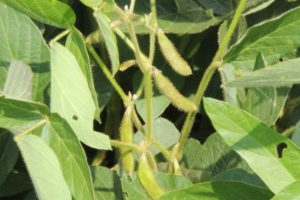LOUISVILLE, Ky. – Researchers at the University of Louisville Conn Center for Renewable Energy Research and Department of Mechanical Engineering are working to transform soy hulls left over from soybean processing into valuable food and industrial products. The United Soybean Board (USB) has awarded $350,000 to UofL to further develop methods for using soy hulls in modified fiber composites for 3-D printing applications and produce the sugar substitute xylose as a value-added product.
This project will pilot a commercially viable process using previous research to convert soybean hull biomass into a low-calorie, diabetic-friendly sugar substitute while simultaneously extracting micro and nanoscale fibers to be used for lightweight fiber composites and thermoplastic packaging products via 3D printing.

The UofL project will utilize these soy hulls to produce xylose, a natural and low-calorie sugar, using a patented process developed by UofL and licensed by BioProducts, based in Louisville. After xylose extraction, the residual fiber, which is about 80% of the starting biomass, has a modified fiber structure that can be used as a natural fiber in composites for 3-D printing applications.
These natural fiber composites also have potential uses in the automotive, civil engineering, military, and aerospace industries, which rely on petroleum-based fiberglass and expensive carbon fiber composites to reduce weight and maintain assembly strength over all-metal constructions. The Conn Center project pursues the development of a stable and efficient method to process the hemicellulose-removed biomass from soybeans into lightweight natural fiber composites.
The food-grade sugar xylose from soy hulls also has high-value industrial applications. This sugar can be used to produce cyclopentadiene, a key ingredient in cyclic olefin copolymer (COC), an amorphous thermoplastic used in polyolefin “shrink films” for medical, food-safe, and industrial packaging. This COC market, which currently depends on petroleum as the source, was valued at $14.9 billion in 2017.
The new USB grant will fund pilot phase development of innovations resulting from previous research at UofL, including 3-D printing using soy hull-polymer composite filaments, xylose separation, and additive manufacturing prospects, as well as a patent application on polymer composite feedstock production. That work initially was funded by USB in 2019.
The major challenge of utilizing soy hulls to produce sugars and fibers is to create efficient, economical, and achievable technology at a commercial scale. Meeting these three criteria elevates the value of this biomass. Currently, one limited outlet for soy hulls is as animal feed. Processing the hulls for a high-value product such as xylose could make growing soy more profitable for farmers.
In the pilot phase, the team will pursue process optimization and design to meet the demands of a commercially viable process. This includes large volume production of xylose and composite filament samples for evaluation by commercial partners in the food and 3-D printing industries.




















Add Comment